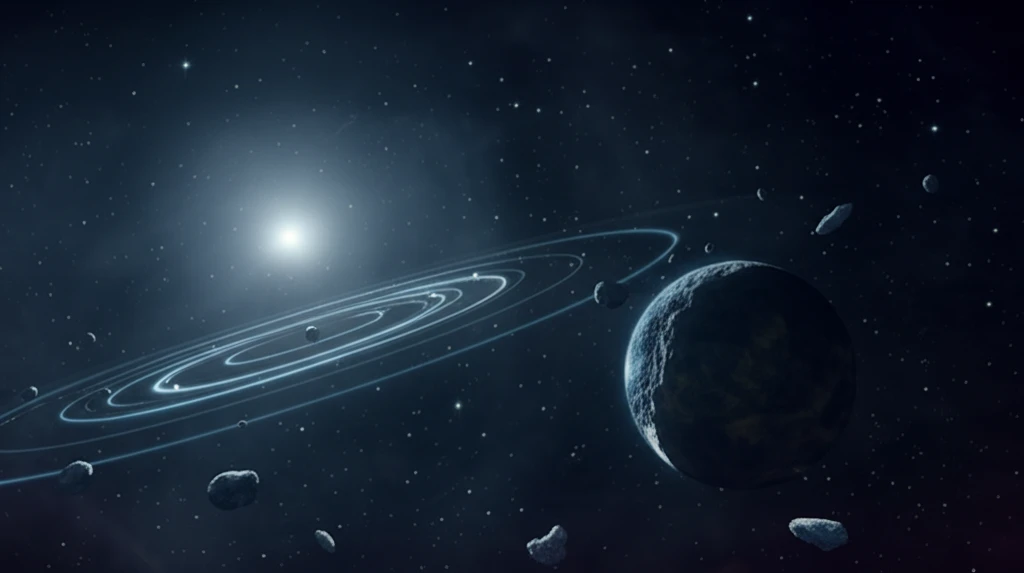
Cosmic Catch: Unraveling the Mystery of Neptune's Transient TNOs
"New simulations shed light on how trans-Neptunian objects become temporarily trapped in Neptune's resonances, challenging existing theories of Kuiper Belt formation and offering fresh insights into our solar system's early dynamics."
The outer reaches of our solar system are a realm of icy bodies known as trans-Neptunian objects (TNOs). These objects, residing beyond Neptune's orbit, offer valuable clues about the solar system's formation and evolution. A significant number of TNOs find themselves in a delicate dance with Neptune, caught in what are called mean-motion resonances. These resonances occur when a TNO's orbital period is related to Neptune's by a simple integer ratio, leading to a repeating gravitational interaction.
Traditionally, it was thought that many of these resonant TNOs were captured during Neptune's early migration, a period when the planet's orbit shifted due to interactions with a surrounding disk of planetesimals. However, a different mechanism known as 'transient sticking' can also contribute to the resonant population. Transient sticking occurs when TNOs, which are actively scattered by Neptune, become temporarily trapped in a resonance before eventually being ejected or continuing their chaotic journey.
A recent study published in The Astronomical Journal uses numerical simulations to investigate the role of transient sticking in shaping the current population of resonant TNOs. This research challenges existing theories about the Kuiper Belt's formation and offers a fresh perspective on the dynamic processes at play in our solar system's outer regions.
Simulating the Dance: How TNOs Get Stuck

The research team, led by Tze Yeung Mathew Yu, Ruth Murray-Clay, and Kathryn Volk, focused on understanding the contribution of transient sticking to the resonant TNO population. They ran numerical simulations to model the behavior of TNOs that are actively scattered by Neptune. These simulations tracked the TNOs as they moved through the region between 30 and 100 astronomical units (au) from the Sun, carefully recording any instances where they became temporarily trapped in a mean-motion resonance.
- Modeling the current scattering population based on observational data.
- Tracking the TNOs movements between 30 and 100 astronomical units (au).
- Analyzing 111 different resonances
- Identifying the periods of libration
A New Perspective on the Kuiper Belt
This research underscores the importance of transient sticking in shaping the structure of the Kuiper Belt. By demonstrating that a significant fraction of resonant TNOs are captured through this mechanism, the study challenges existing theories about planetary migration and the formation of the Kuiper Belt. Furthermore, the study provides a framework for interpreting observational data and for identifying transient interlopers within resonant populations dominated by other capture mechanisms. As observational surveys continue to map the outer solar system with increasing precision, these findings will be crucial for unraveling the complex history of our planetary neighborhood.
